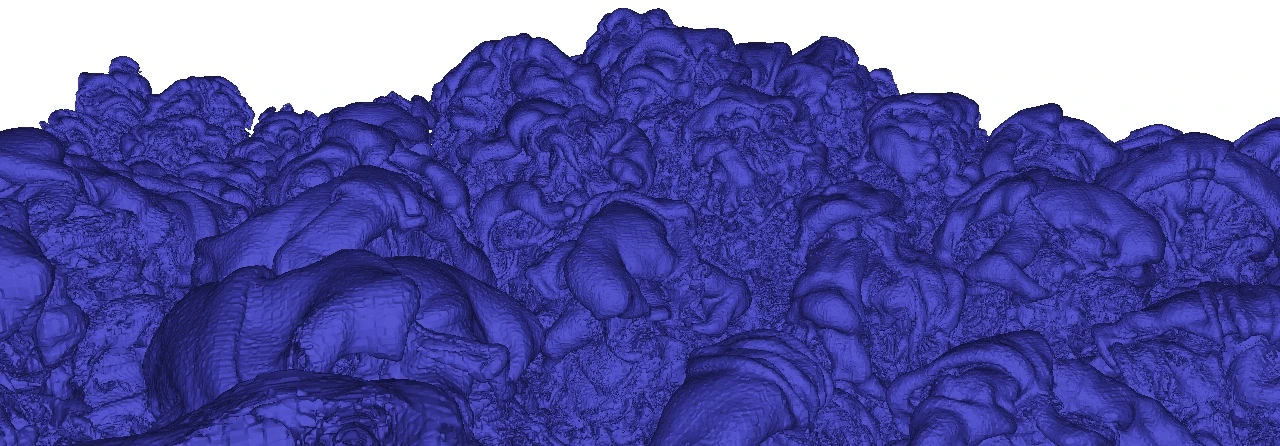This article was first published in IEEE Xplore.
New web technologies have enabled the deployment of powerful GPU-based computational pipelines that run entirely in the web browser, opening a new frontier for accessible scientific visualization applications. However, these new capabilities do not address the memory constraints of lightweight end-user devices encountered when attempting to visualize the massive data sets produced by today's simulations and data acquisition systems.
In this paper, we propose a novel implicit isosurface-rendering algorithm for interactive visualization of massive volumes within a small memory footprint. We achieve this by progressively traversing a wavefront of rays through the volume and decompressing blocks of the data on demand to perform implicit ray-isosurface intersections. The progressively rendered surface is displayed after each pass to improve interactivity. As well, to accelerate rendering and increase GPU use, we introduce speculative ray-block intersection into our algorithm, where additional blocks are traversed and intersected speculatively along rays as other rays terminate to exploit additional parallelism in the workload.
Our entire pipeline is run in parallel on the GPU to take advantage of the parallel computing power that is available even on lightweight end-user devices. We compare our algorithm to state-of-the-art low-overhead isosurface extraction and demonstrate that it achieves 1.7×−5.7× reductions in memory overhead and up to 8.4× reductions in data decompressed.
